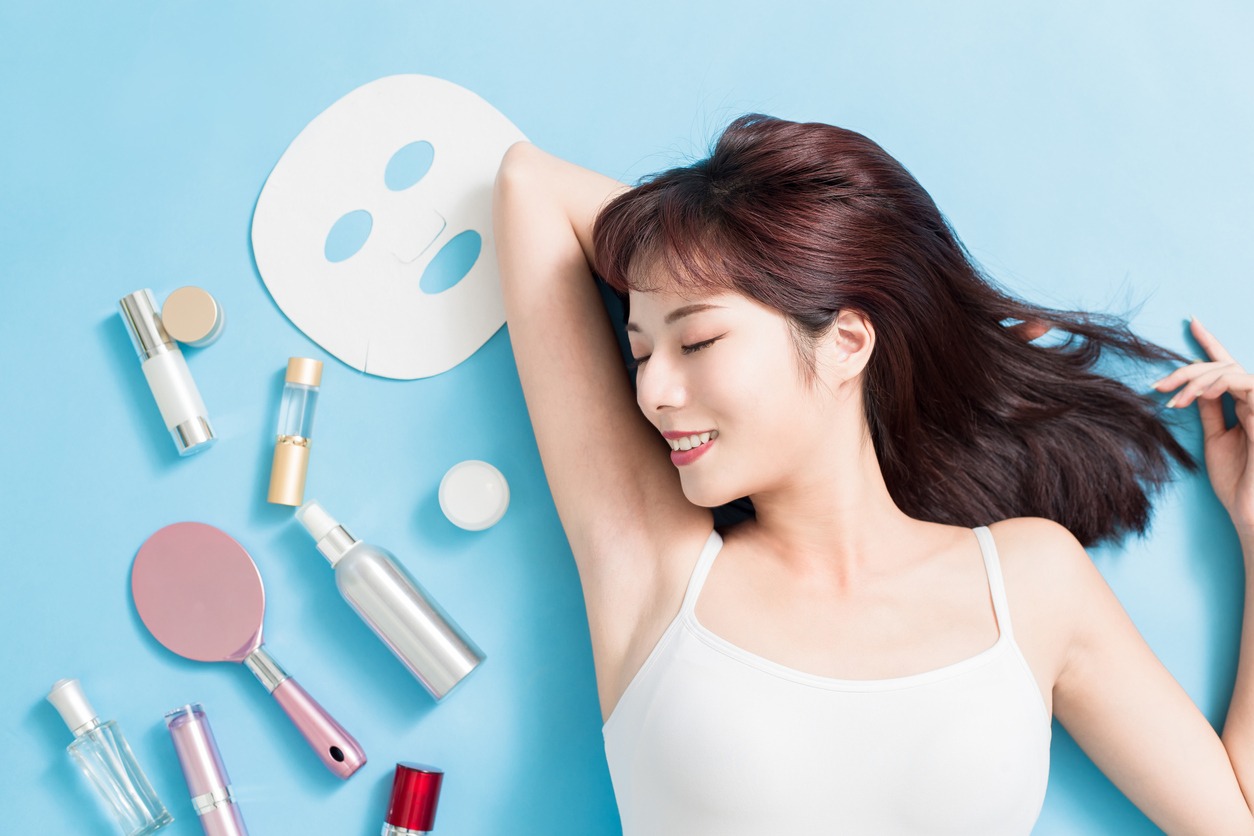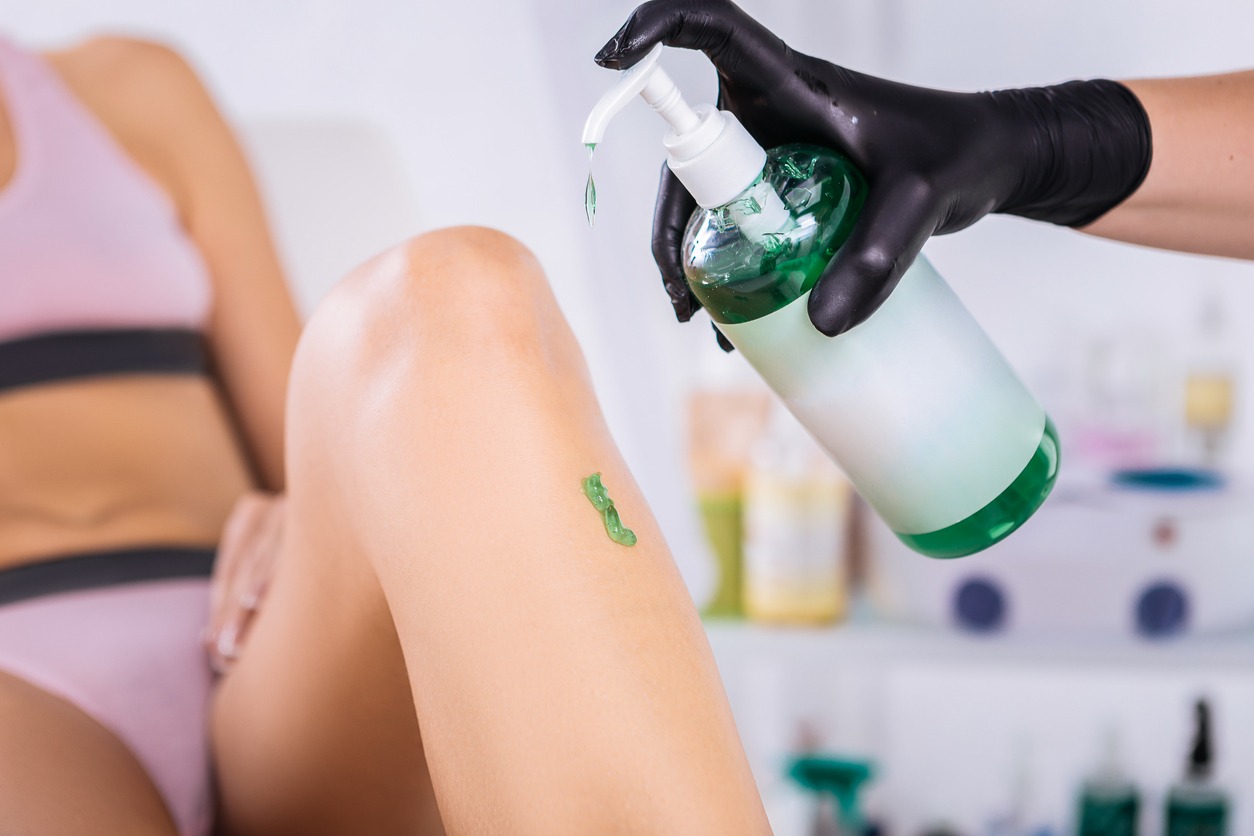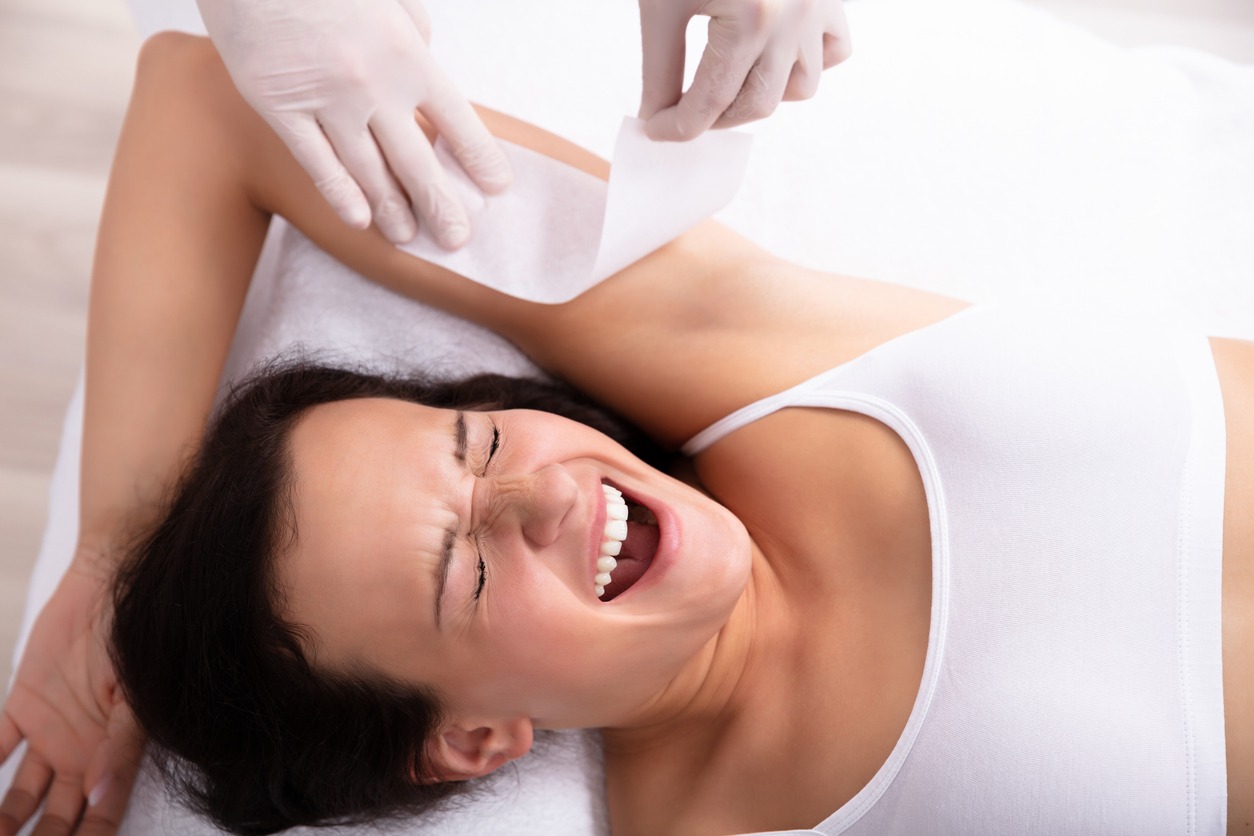You may believe that once you’ve completed your dreaded waxing appointment, you’re done, but there’s one important thing left to do: diligent post-waxing care. Following a few simple guidelines after waxing is critical. Remember that a little forethought can save you from some very annoying side effects that could ruin your perfect wax.
While waxing is nothing to be afraid of, it does leave the skin sensitive, at least temporarily. During this time, you should follow some skin care tips to soothe your skin and protect your waxing results. Similarly, you should avoid certain other things to reduce your chances of developing skin problems such as ingrown hairs, bacterial infections, rashes, itching, redness, and scarring.
What is Waxing?
Waxing is a semi-permanent hair removal technique. It is one of the most popular methods for removing unwanted body hair because it is both quick and convenient. Furthermore, its effects last longer than methods such as shaving.
Waxing can be used to remove unwanted hair from any part of your body, including your arms, underarms, legs, back, brows, abdomen, face, bikini area, and feet. Other hair removal methods, such as threading, do not provide you with this level of flexibility.
Waxing is thought to have originated in Egypt before 3000 BC. To remove unwanted body hair from any part of the body, there are many advanced and effective waxing options available today. Choosing the best waxing method from the many options available can help you achieve a smooth and hairless body.
What To Do Immediately After and Between Waxes
Immediately after waxing:
- Put a cool compress on the skin or take a cool shower to make it less sensitive and irritated. You shouldn’t take hot baths or showers.
- Wear clothes that don’t fit too tightly to avoid irritation.
- Don’t use lotions, creams, or products with scents because they can irritate skin that is already sensitive.
- Put a nonprescription cortisone cream on the area that was waxed to reduce swelling.
- Avoid strenuous activity for 24 hours after waxing. Perspiration can irritate freshly waxed skin.
One to two days after waxing:
- Keep wearing loose-fitting clothing to reduce friction.
- Continue to stay away from perfumed oils and creams. As needed, apply gentle gels such as aloe vera to help soothe the skin.
Between waxes:
Regularly cleanse and exfoliate. Removing dead skin and other debris can aid in the release of embedded hair and the prevention of future ingrown hairs.
Natural and Homemade Remedies for Soothing and Exfoliating
If you have lingering irritation or inflammation, you may be able to find relief through home or natural remedies.
1. Sugar scrub
A simple homemade sugar scrub can help soothe irritation and prevent the formation of ingrown hairs. To make your own, combine 1/2 cup sugar and 1/2 cup coconut or olive oil. Use a small amount to gently scrub the affected area in a circular motion.
You may find that daily exfoliation is too harsh for your skin, so start by exfoliating every other day. Purchase pre-made sugar scrubs.
2. Aloe vera
If you have an aloe vera plant, all you need to do is break off a piece of its leaf to enjoy its nourishing benefits. To relieve inflammation, apply the plant’s essence directly to the affected area and gently massage it in. This can be done up to three times per day.
3. Tea tree essential oil
Tea tree oil can also be used to soothe freshly waxed skin. Because oil is more likely to clog pores the first day or two after waxing, save it for lingering or late-forming irritation.
Before applying tea tree essential oil to your skin, dilute it with a carrier oil such as olive or coconut oil. For every one drop of tea tree oil, add ten drops of carrier oil. A patch of diluted tea tree oil on your arm can be used to test for allergies. You should be able to use it if there is no reaction after 24 hours.
The diluted solution can be applied to the affected area up to three times per day.
4. Witch hazel
Witch hazel has antiseptic and astringent properties that can help soothe and prevent rashes. Apply a cotton pad soaked in pure witch hazel extract to the affected area up to three times per day.
5. Apple cider vinegar
Another natural antiseptic is apple cider vinegar. To speed healing and prevent infection, soak a cotton pad in apple cider vinegar and apply it to the inflamed area up to three times per day.
Over-The-Counter (OTC) Products to Soothe and Exfoliate
Traditional beauty products can also help soothe irritated skin and stop bumps from forming.
Creams and gels
1. Hydrocortisone cream is a steroid applied topically that reduces inflammation and swelling. It can be used to soothe irritation after waxing.
2. Gel containing tea tree oil can help reduce your risk of infection by soothing inflammation. Gels, unlike tea tree oil, do not clog pores and can be used immediately after waxing.
3. Aloe vera gel, is derived from the aloe vera plant and has soothing, moisturizing, and anti-inflammatory properties.
Types of Waxing for Hair Removal
1. Soft wax
Soft waxing, also known as strip waxing, involves applying a thin layer of warm body wax to the skin. This is commonly used on larger parts of the body, such as the arms and legs. It is applied directly to the skin with a wooden stick or a roller. The hair is then removed by pulling it off with a strip of cloth. Soft waxes reach the tiny, fine hair strands that are invisible to the naked eye, resulting in smooth skin. However, because it begins to pull the skin cells, causing bleeding and damage, this body wax should only be used once in a session on a specific area (never multiple times).
2. Hard wax
Hard body wax is frequently used on smaller, more sensitive areas like the upper lip, underarms, and bikini line. This type of body wax is applied to the skin while it is still warm. Allow it to cool and harden before pulling it off in the opposite direction of hair growth. Hard waxes have the advantage of binding only to the hair and never to the skin. The procedure is less painful than soft body waxing and can be repeated as many times as desired without causing skin damage.
3. Fruit wax
Fruit body wax works like hard body wax and is good for skin that is sensitive. It has extracts of fruits like berries and plums, which means it is full of antioxidants and vitamins that are good for the skin. Also, they are much gentler on the skin than regular soft body wax, which can make them cost more. But this won’t leave any marks, and it’s also good for your skin, which is a bonus.
4. Chocolate wax
Another popular choice that can be found in most salons is chocolate wax. It uses chocolate, which is good for your skin because it has antioxidants and is less painful to use than other types of body wax. Chocolate body wax also has glycerine and oils like soybean and almond in it. It also has anti-inflammatory properties, which makes it a great choice for people with sensitive skin. Again, this type of wax is usually more expensive than other types, but it is also good for your skin.
5. Sugar wax
Sugar wax has been around for a very long time. It is usually made with sugar, lemon, and hot water. Sugar pulls the root of the hair out of the skin, just like soft and hard body wax, but it is made from natural ingredients, so it is great for people with sensitive skin. Sugar wax, like hard body wax, doesn’t stick to the skin, only the hair. This means it can be put on and taken off more than once without irritating the skin. It is also a more natural alternative to other types of wax and can be used on any part of the body. Before you go to the salon or try it at home, remember that the hair needs to be at least a quarter of an inch long for the gel to stick to it.
7 Benefits of Waxing
1. Between appointments, you’ll have less hair growth.
Waxing removes hair from the root. This makes the hair grow back slower. So, your skin will stay smooth until the ripped hair follicle heals and the hair shaft grows to the surface. The average time between waxing appointments is three to four weeks, so this whole process takes about that long.
2. Your skin will get a light scrub.
Waxing takes off the top layer of skin, making it smoother and brighter, but it is not the same thing as exfoliation. It is strongly suggested that you exfoliate a few days before your waxing appointment to get your skin ready for the process. If you exfoliate the day of your appointment, your skin may be too sensitive. You can wax again after a few days, when the redness has gone away and your pores have closed. Exfoliating after waxing is one way to stop hairs from growing back into the skin.
3. As your hair grows back, it will get finer and thinner.
This is because waxing pulls hair out by the root, which weakens the hair follicle over time. Weak hair follicles make hair that is thinner and less dense. But your genes still control most of your hair’s traits, like how coarse it is, what color it is, and how fast it grows. Expect a slow change from coarse to fine over the course of a few appointments. It will take a while before you notice a big change.
4. Made the skin feel better.
When you wax, the top layer of dry, dead skin cells and extra hair are taken off. The result is smoother, more even skin that you can’t get by shaving or using hair removal creams. Some waxes even have aloe or butter in them to keep the skin moist and help it look and feel better.
5. No skin irritation or allergies.
Unlike hair removal creams and shaving gels, wax used for body waxing procedures contains no additional ingredients that can cause skin irritation or allergies. Waxing, when done correctly by trained and experienced professionals, can result in no or very little and fleeting redness.
6. No cuts and minimal bruising.
It can be discouraging to try to improve the appearance of your skin by using methods that result in things that are detrimental to its appearance, such as cuts and bruises. Even if they are only temporary, these things can be inconvenient to deal with. Waxing, unlike shaving, does not result in cuts, but it can occasionally result in bruises.
7. Stubble-free skin.
Waxing completely removes all hair from the root, as opposed to shaving, which simply cuts the hair where it emerges from the skin. Shaving can leave skin rough and stubby, whereas waxing can leave skin soft.
Does Waxing Remove Hair Permanently?
Waxing is not a long-term solution. Waxing allows for effective plucking of the entire hair from the follicle with the root. For a while, the follicle remains barren. However, depending on the rate of your hair growth, the hair follicle heals itself and new hair begins to grow in three to six weeks.
It is critical to remember that regular waxing damages hair follicles and weakens hair. As a result, many people experience minimal regrowth following this intense hair removal procedure. However, in most cases, the hair follicle heals on its own and new hair begins to grow. If you continue to wax, you will eventually notice slower regrowth. There is also thinner and finer regrowth.
Conclusion
The proper waxing technique will protect you from long-term damage, but only a proper post-wax treatment will ensure that your skin remains soft and shiny after you leave the waxing room.



